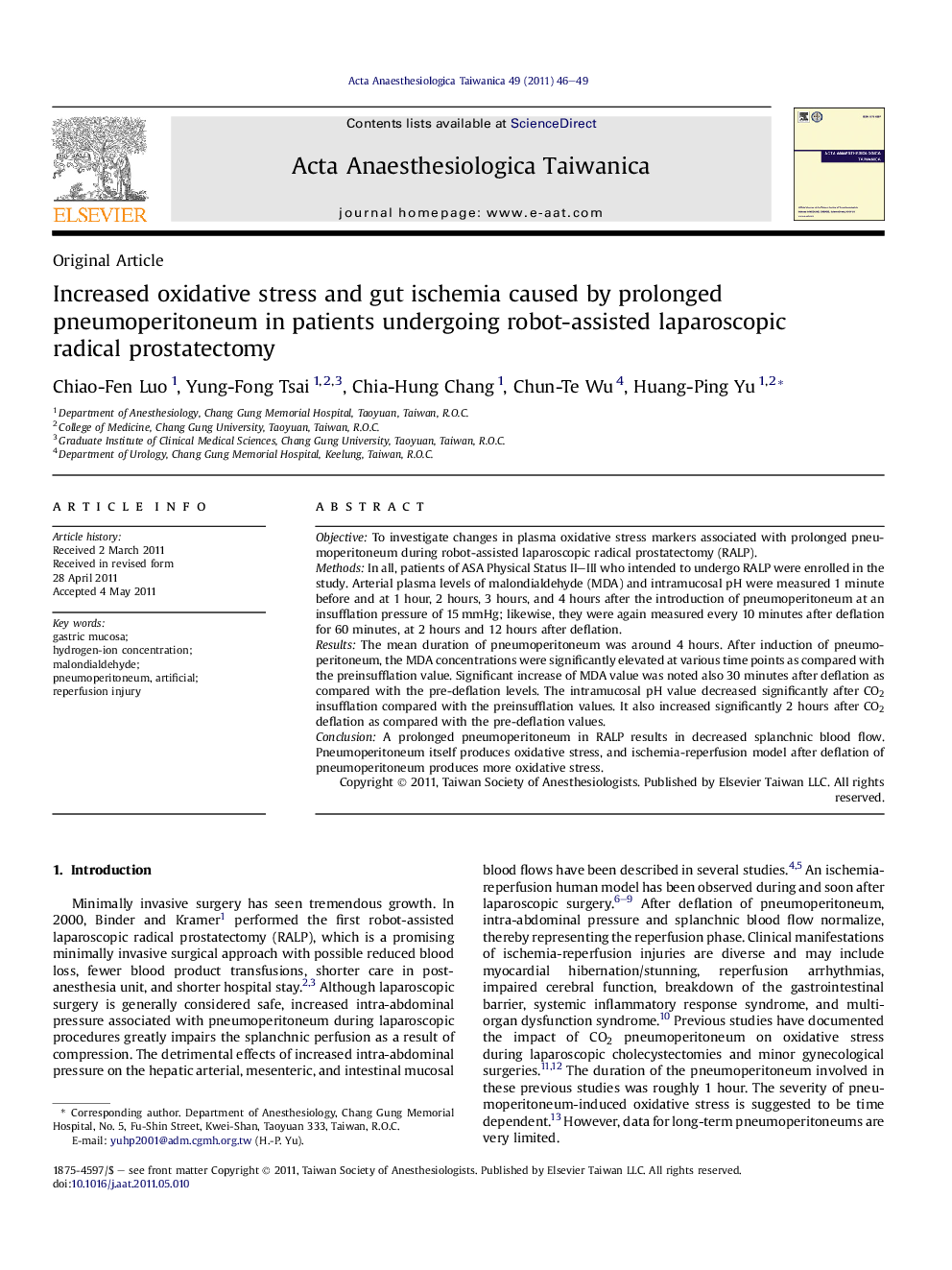| Article ID | Journal | Published Year | Pages | File Type |
|---|---|---|---|---|
| 2741555 | Acta Anaesthesiologica Taiwanica | 2011 | 4 Pages |
ObjectiveTo investigate changes in plasma oxidative stress markers associated with prolonged pneumoperitoneum during robot-assisted laparoscopic radical prostatectomy (RALP).MethodsIn all, patients of ASA Physical Status II–III who intended to undergo RALP were enrolled in the study. Arterial plasma levels of malondialdehyde (MDA) and intramucosal pH were measured 1 minute before and at 1 hour, 2 hours, 3 hours, and 4 hours after the introduction of pneumoperitoneum at an insufflation pressure of 15 mmHg; likewise, they were again measured every 10 minutes after deflation for 60 minutes, at 2 hours and 12 hours after deflation.ResultsThe mean duration of pneumoperitoneum was around 4 hours. After induction of pneumoperitoneum, the MDA concentrations were significantly elevated at various time points as compared with the preinsufflation value. Significant increase of MDA value was noted also 30 minutes after deflation as compared with the pre-deflation levels. The intramucosal pH value decreased significantly after CO2 insufflation compared with the preinsufflation values. It also increased significantly 2 hours after CO2 deflation as compared with the pre-deflation values.ConclusionA prolonged pneumoperitoneum in RALP results in decreased splanchnic blood flow. Pneumoperitoneum itself produces oxidative stress, and ischemia-reperfusion model after deflation of pneumoperitoneum produces more oxidative stress.
